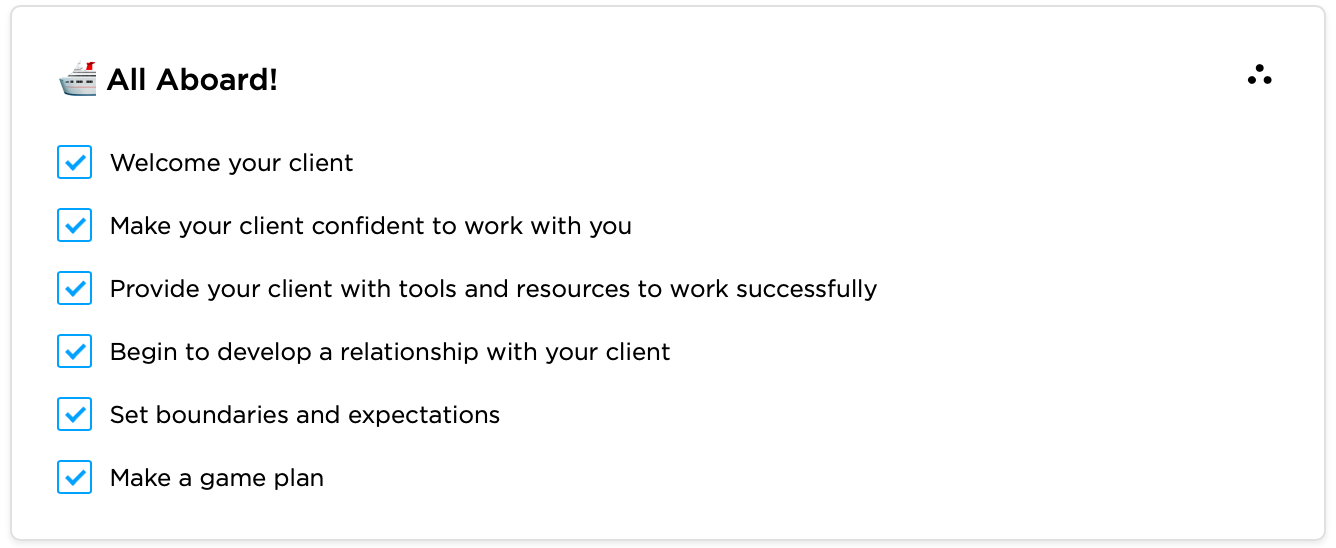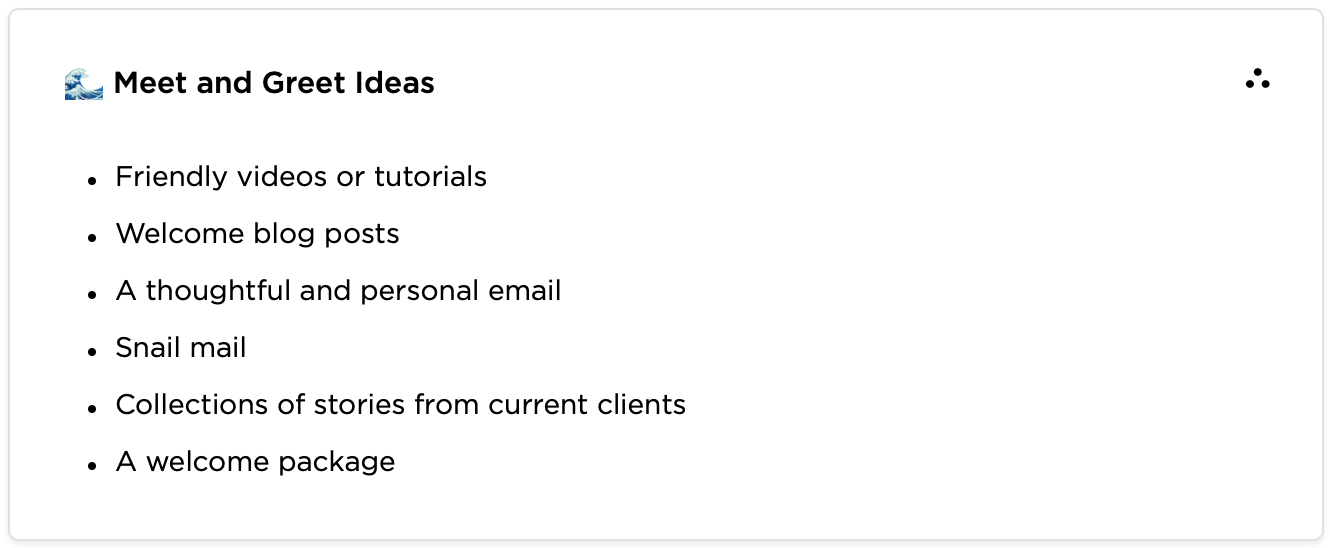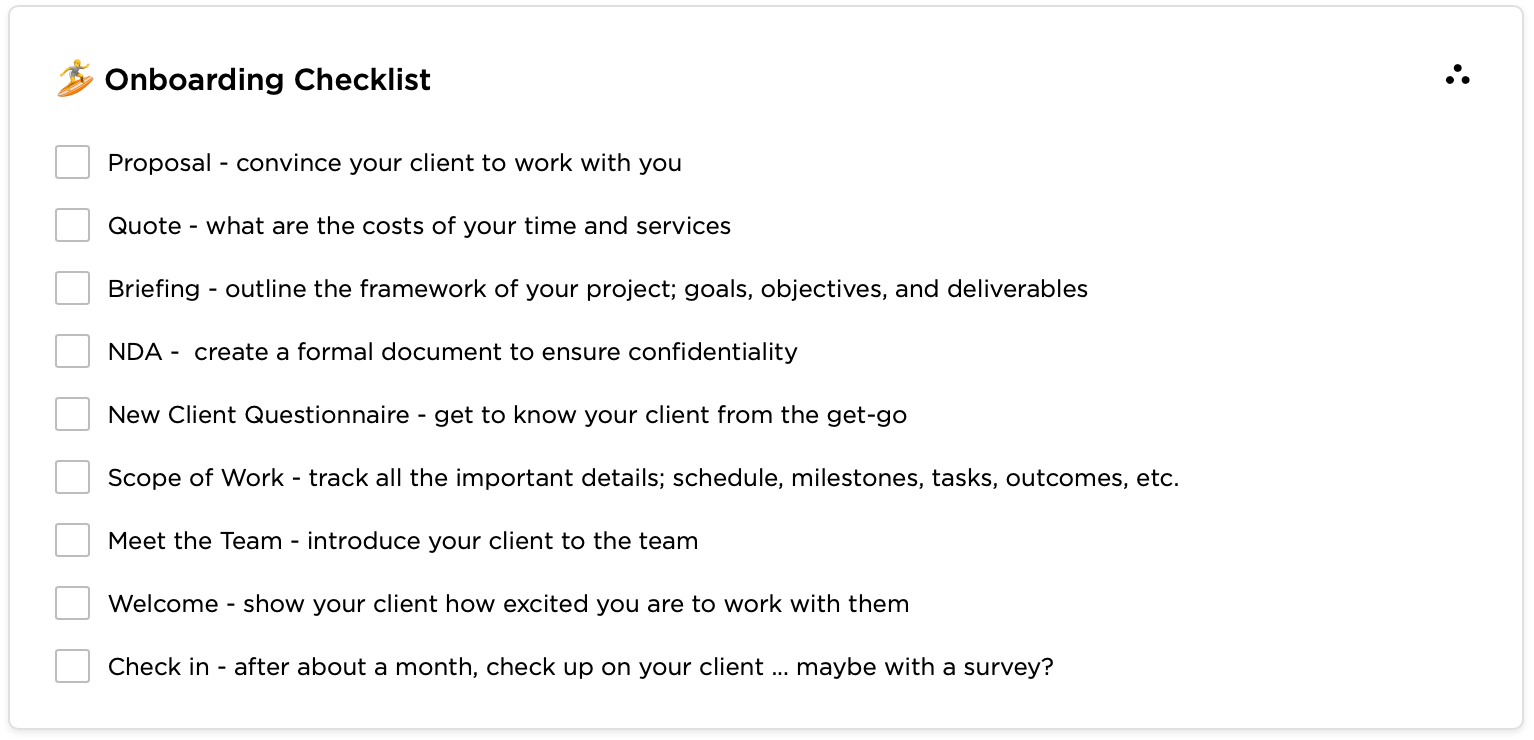Ride the Wave of Success with Client Onboarding

It’s true what they say, a good first impression can work wonders, especially for your business. Believe it or not, a study by ABA Banking Journal found that customers are almost 3 times more likely to churn during their first 90 days. That’s why first impressions and client onboarding, in every profession, is crucial.
This week we are excited to share Collato’s legendary guide to client onboarding. In this blog, we are exposing all our secrets to a successful onboarding process. Let’s ride!
Client Onboarding 101
Client onboarding is a way to welcome your customer to your business. While there are many approaches to the onboarding process, it usually entails setting up your contract, getting to know your customer, launching your project, etc. But don’t stress, we’ll get more into that later. For now, let’s list out what client onboarding is designed to do:

So now that we understand what client onboarding encompasses, why is it so important?
As we mentioned before, a successful client onboarding process reduces churn, but if that wasn’t convincing enough, here are some statistics from Hubspot to prove the significance of client onboarding:
- 63% of customers consider the company’s onboarding program when making a purchasing decision (wyzowl.com).
- 86% of people say they’d be more likely to stay loyal to a business that invests in onboarding content that welcomes and educates them after they’ve bought (wyzowl.com).
- Firms that focus on customer experience see employee engagement increase by 20% (followoz.com).
- Highly engaged customers purchase 90% more often, spend 60% more per transaction, and have 3 times the annual value compared to other customers (groovehq.com).
Those are some telling facts! Next let’s talk about how to create a successful onboarding process.
Get the Right Gear: Everything you Need for Client Onboarding
Welcoming your client to the team isn’t just a one-time-thing. In fact, it’s more of a process than a singular event. In this section, we are going to present Collato’s four-step method to a strong client onboarding process. And yes, we have templates to help you out!
1. Project Kick Off
Before taking your client onboard, make sure you check off the basics. Brainstorm some ideas, list out the cost of your services, and establish project expectations.
- Proposal - Written in the early stages, a proposal outlines the framework of your project, such as an explanation of goals and the plan to achieve them. The information in your proposal is rough at best. It’s mostly to get your client and team brainstorming on the project objectives and priorities. And better yet, it reassures your client that their decision to work with you was a good one.
- Quote - Quoting a project is easier said than done. It’s all about estimations, research, past experiences, etc. But don’t jump into work without one! You and your client need to be on the same page when it comes to pay expectations. Don’t waste your time and resources on projects that fall through due to a disagreement on pay.
- Briefing - A brief is a document that outlines your design project. It focuses on deliverables and project workflow so you can manage your clients expectations, as well as grasp the scope and scale of the project.
2. Get Everyone Onboard
Now that you landed the client, the next step is to start organizing the project. Creating NDAs, new client questionnaires, and scope of work may seem like meticulous tasks, but it doesn’t have to be! We are going to take you through it, and we also have templates to support the process.
- NDA - One of the more technical aspects of client onboarding is writing up a non-disclosure agreement (NDA). If you want to maintain confidentiality of your working projects or ideas, it’s important to create an NDA. They can take form as a larger legal document, as a confidentiality clause, or as a confidentiality statement.
- New Client Questionnaire - Get to know your client with a questionnaire! This document contains everything you need to start your design process. Typically these questionnaires ask the client to share something about themselves, their experience in the field, and their design envisions.
- Scope of Work - A Scope of Work (SOW) is sort of like a project proposal but it’s more detailed. You are no longer trying to convince the client to work with you, but rather setting a plan for the project. A SOW brings together all the most important details, from schedules, milestones, and tasks, to deliverables, and payment information.
3. The Meet and Greet
Welcome your clients to the team by introducing yourself and your colleagues. Make clients and customers feel a part of the team by writing them an email, giving them a friendly call, sending them some snail mail, or including them in your workspace community. Collato set up a Slack channel where clients can ask questions, suggest software modifications, or meet other Collato users. But that’s just one way to do it!
Let your customer know how much they mean to you. It takes little effort to make your client feel valued and appreciated and it helps you greatly in the long-run!

4. Check In
There is some debate when it comes to check ins. Some people think they are spam-y and a complete wipeout, and others swear by them. The secret is to find a perfect balance between the quantity and frequency of your check ins.
Typically these messages are sent out a month or so after your customer joins the team. Depending on your business, it might be helpful to send your client a quick email that fixes a problem, provides guidance through the project, or notifies them of a change or new product. Make sure that your messages have something valuable to add to the customer’s experience, rather than a short “Hey Jane Doe, just wanted to know how everything is going?”
Another thing to take into account is making your onboarding check ins as personal as you can, like adding details specific to that client.
“Hey Laura! It was so nice getting to know you this morning. I’m looking forward to helping redesign your website, it’s going to look stellar!...”
Keep your client involved, from the very beginning. Let them know what is going on, what you expect of them and of yourself. It also further develops your positive designer-client relationship.
💡 After you finish the onboarding process, you can send a customer survey to see just how effective your methods actually are. Check out our blog post on how to write one yourself!

Gnarly Tricks
Just a few concluding tips and tricks that we think are super important to remember! By doing your homework, organizing your team, and staying flexible, your client is surely to be happy with your onboarding process!
1. Research Beforehand
Make sure you know your client inside and out. This includes their business, history, competitors, etc. If they are switching to your services from another, find out what went wrong, why the relationship ended, what you can do better.
2. Organize Yourself
Keep all client information in one central place, so that you and your team can easily access it. If everyone is on the same page internally, it leaves less room for miscommunication or repetitive questions for the client. If you’re looking for a platform to stay organized, Collato can help! Document decisions, collaborate with teammates, and see all feedback in one place. Head on over to our main page for more information!
3. Be Flexible
Not every onboarding process is the same. It could vary depending on your company, the nature of the project, or even the client-type. Flexibility is key! Be willing to change a few things around to make your customer's experience better. It’s definitely worth it!
Catch Your Own Wave
Now it's time to catch your own wave and try client onboarding out for yourself!
But if you'd rather chill onshore, let us do the hard work for you. At Collato we have all the templates you need for a totally sick client onboarding process. Come check it out!
Until then, shaka!
🍦 Related topics you may be interested in:
1. The mystery of new client questionnaires
